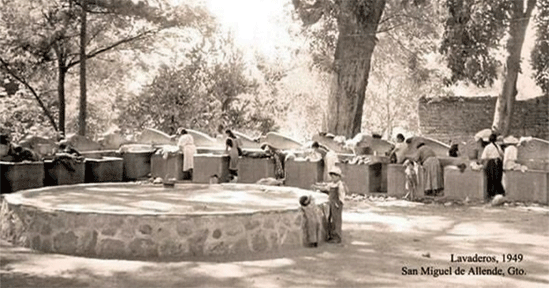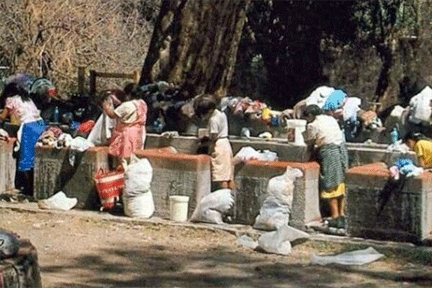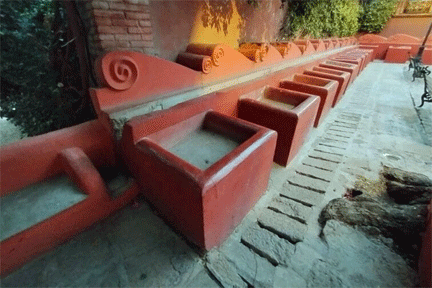History of the wash basins of El Chorro
News Category: News, Community News, and General Discussion
-
Published May 29, 2024
The wash basins of El Chorro, which for almost 200 years were functional for those who came there to wash their clothes, are today a tourist spot for visitors and inspiration for artists who come to portray the peculiar square that is located a few meters from the historic center.
For years, this place was a meeting point for women from San Miguel who, from different parts of the city, met to wash their clothes taking advantage of the water from the spring that gave rise to the city.
Its origin dates back to the eighteenth century, when Manuel Francisco de la Canal, who had arrived in San Miguel el Grande in 1732, ordered the construction of public baths and washhouses in order to take advantage of the water springs.
In the upper part of what is now known as El Chorro, seven rooms were installed that housed five public baths, one private and one more, where the water gushed, which was used to store what was necessary for cleaning and maintenance.
The water that was not used in these baths ran downhill and was used in the laundry rooms, 10 located in front of the baths, but at a lower level, and 19 formed in a square that were built in a square in the lower part of the place.
The water reached the washhouses through clay pipes and thanks to gravity, the liquid ran through a channel that passed through one side of the 19 spaces destined for carving clothes, which allowed the women to drink the necessary water without limitation and also to continue running to supply all the washing stations.
The laundry rooms are made of concrete, with a slope that allows for drainage, and texture that helps clothes fit better. Between each one there is enough space for one person, so they had to be placed giving the sword to the previous sink.
Those who washed there installed clotheslines from the center of the square to be able to air the clothes before loading them into their baskets and returning home.
While the women washed, the children played in the square or dropped wooden sticks down the canal to see which one would get to the end first. The water that was not used for washing and continued its journey through concrete channels reached the orchards that occupied the space of what is now Juárez Park.
Today, the rooms that were originally public baths are used as offices, and only the 19 sinks in the lower part keep the memory of when the water gushed naturally and deep wells were not necessary to access the liquid





Leave a Reply